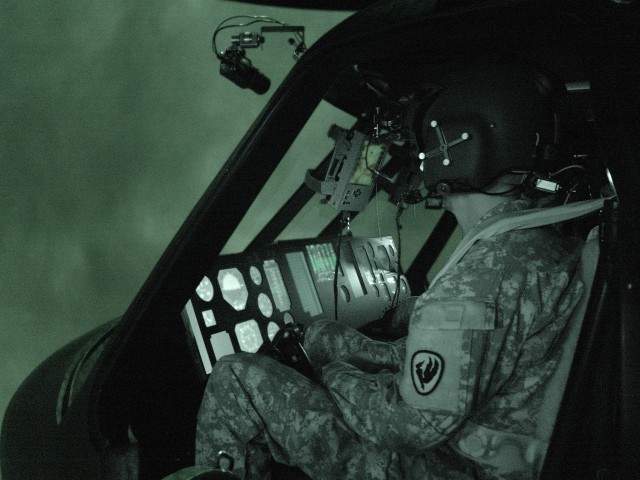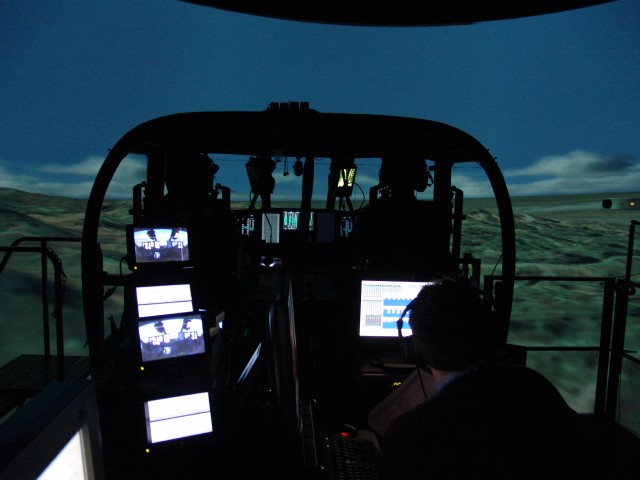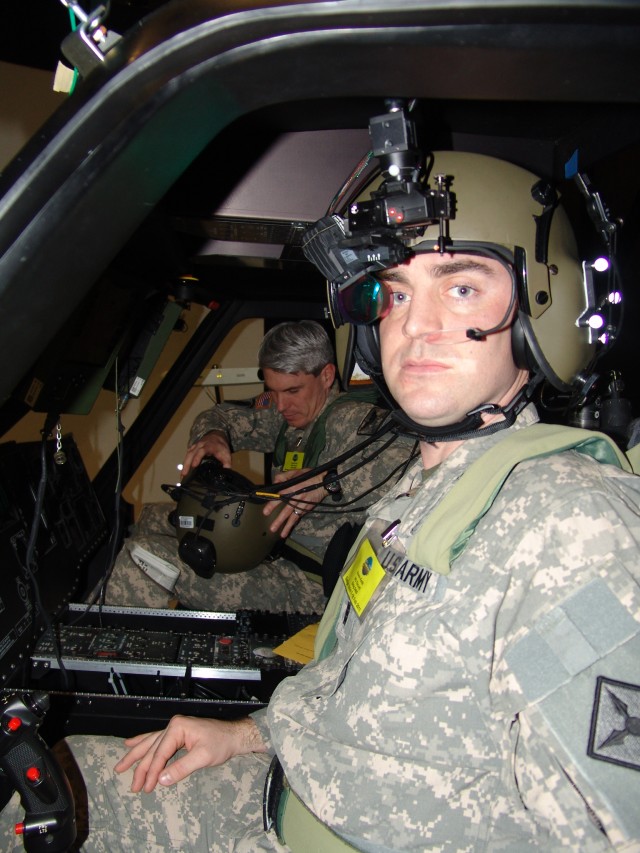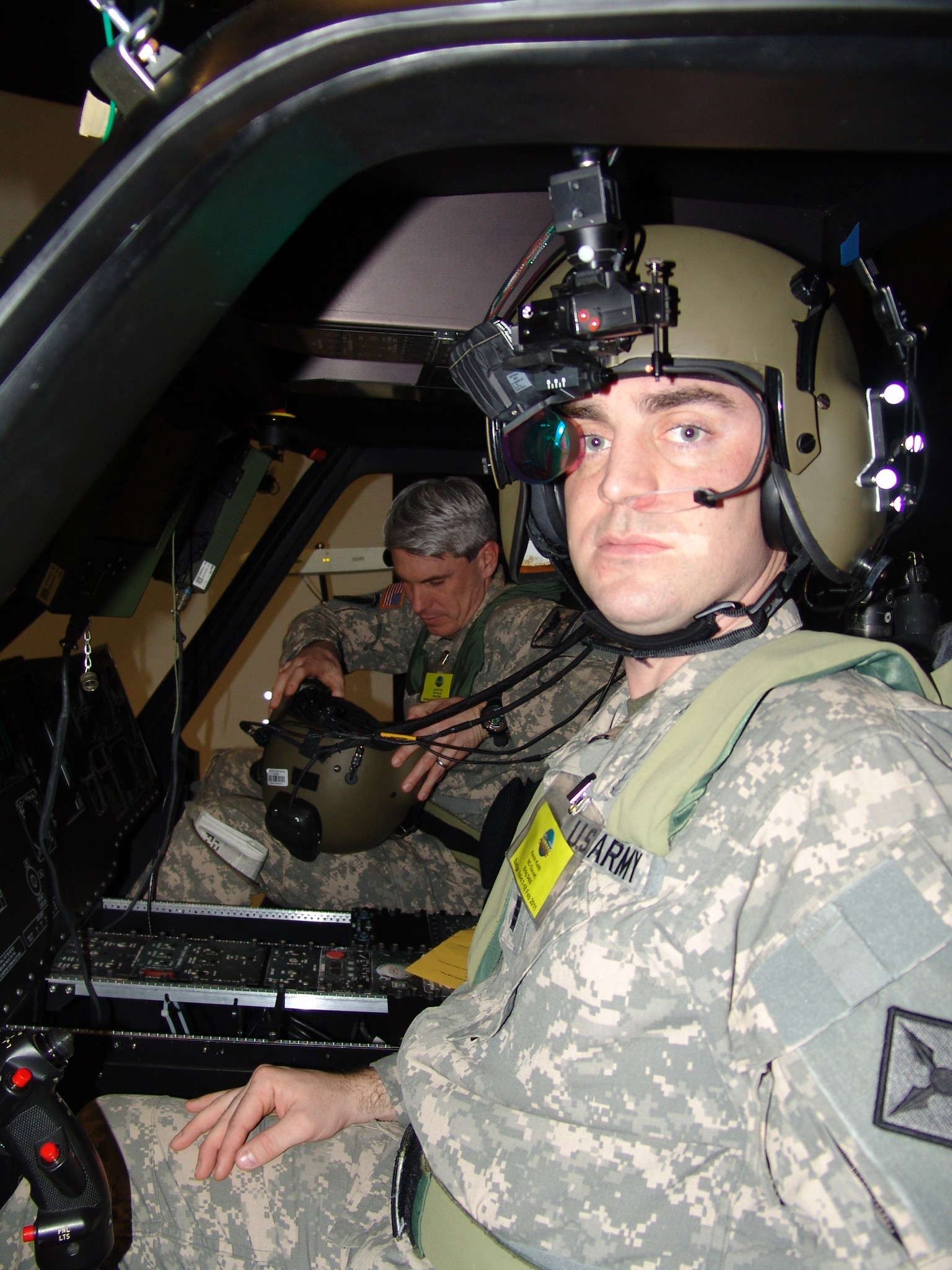REDSTONE ARSENAL, Ala. -- The formula is Soldiers helping Soldiers helping Soldiers - and it works.
Aviators of the Kentucky Army National Guard provided critical subject matter expertise during experiments here at the Aviation and Missile, Research, Development and Engineering Center's Advanced Prototyping Engineering and Experimentation-2 Laboratory's Battlefield Highly Immersive Virtual Environment Laboratory to support the Program Executive Office Soldier, Air Warrior Product Office.
The Air Warrior Product Office manages aviation life support equipment for the United States Army.
"Basically it is anything that an Air Warrior can wear, consume or carry," said Maj. Jay Maher, Assistant Product Manager for Air Warrior, Air Warrior Product Office.
"The potential Air Soldier System situational awareness technologies the Guard Aviators evaluated, if implemented, will increase the Army Aviation's ability to operate in degraded visual environments and enhance mission execution with 'heads up eyes out' flight" said Maher. "The Air Soldier System is the next generation of life support equipment for the Air Warrior."
The Kentucky National Guard pilots' dedication shown through as they set a BHIVE record.
"The pilots flew a record 36 missions during an aggressive two-week schedule," said Jody Creekmore, Lead Engineer and Lab Manager, APEX-2 Lab.
The pilots who flew the missions in the BHIVE have over 60 years of combined military service.
"Without the pilots' participation and vast knowledge of aviation operations, the experiment would not have been a success," said Maher. "The Kentucky National Guard pilots were incredibly enthusiastic and executed each mission with incredible skill and professionalism."
There were four technologies tested during the experimentation but the one that the felt would better benefit the Air Warrior was the 3-Dimensional Heads-Up Display.
"The Advanced HUD is without a doubt the most important of the situational awareness technologies we evaluated and being able to have a three dimensional environment in the approach and landing phase of flight is without saying the most important contribution they could make for pilots flying in a degraded visual environment," said Chief Warrant Officer 3 Kevin Keith, 1st Detachment, Charlie Company, 2nd Battalion, 238th Aviation Regiment, Medical Evacuation, Kentucky Army National Guard.
The pilot with the least aviation experience echoed his fellow aviators.
"The 3D HUD will allow me to sit my helicopter down with more accuracy instead of rushing to the ground," said Warrant Officer 1 Joe Krestan who became a pilot two years ago.
Chief Warrant Officer 2 Jason Conley, a pilot with three years active duty in the Navy and five years in the Army National Guard, summed up the opinions of all the pilots because he too felt that "the 3D HUD would save lives."
The BHIVE's human factors engineers will use data collected from cameras mounted on the pilots' helmets to record data on eye movement during the experimentation.
"If a crewmember's attention is drawn to a particular instrument display or control longer than it should be then the data will show it," said Ben Schwartz, SAIC, Technical Data Writer and Human Factors Engineer, System Simulation and Development Directorate, AMRDEC.
The crewmembers were asked what they thought about the test, what worked and what didn't, and this feedback is invaluable, said Schwartz.
The Kentucky National Guard Aviators flew a record number of hours in the BHIVE so that Army Aviators on the battlefield will be safer in the future.






Social Sharing